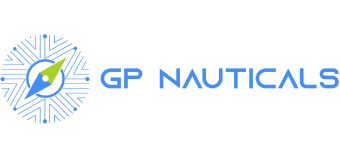Renewable Energy in Maritime Logistics
The International Maritime Organization (IMO) has embarked on a bold journey towards sustainability, setting an ambitious target for the shipping industry: by 2030, at least 5% of energy used in maritime transport should come from near-zero greenhouse gas emission fuels, with aspirations to reach 10%. This goal is not just an environmental imperative but also a significant step towards transforming the logistics and shipping industry into a more sustainable and eco-friendly sector.
Current State of Affairs in Maritime Logistics
As of now, the industry is at a growing stage in meeting these ambitious goals. Niels Rasmussen, the chief shipping analyst at BIMCO, notes that merely 1% of bulk carriers, container ships, and tankers are equipped to use alternative fuels, and their availability is quite limited. The transition to renewable energy in maritime logistics is laden with challenges, yet it is a crucial endeavor to mitigate the environmental impact of one of the world’s biggest and essential industries.
The Road Ahead for Renewable Energy in the Maritime Industry
Looking forward, the forecast is optimistic. It’s projected that 29% of new ships and 42% of the deadweight capacity from the order book will be delivered ready or adaptable for alternative fuels. However, even with no recycling of existing ships, only 4% of the fleet’s deadweight capacity will be ready to utilize alternative fuels by 2028, with another 4% prepared for conversion.
The Container Sector Leading the Changes
The container sector is poised to lead this green revolution. It’s estimated that at least 23% of the deadweight capacity of the container fleet will be ready or adaptable for alternative fuels. Tankers and bulk carriers are also making strides, with projections reaching around 7% and 4%, respectively.
Alternative Fuels
Currently, Liquefied Natural Gas (LNG) is the most popular alternative fuel. However, methanol and ammonia are fast gaining popularity due to their lower environmental impact and potential for sustainability. The selection of alternative fuels is crucial, as each has different infrastructural needs, availability issues, and environmental impacts.
Strategies and Innovations to Propel Renewable Energy in Maritime Logistics
Investment in Research and Development: Continuous investment in R&D is essential for developing more efficient and cost-effective green technologies. This includes advancements in fuel technology, engine efficiency, and alternative propulsion methods.
Global and Local Incentives: Governments and international bodies must provide incentives to accelerate the shift towards renewable energy. This could include subsidies for green technology adoption, tax rebates for low-emission ships, and funding for research initiatives.
Infrastructure Development: Developing the necessary infrastructure for alternative fuels, such as refueling stations and maintenance facilities, is crucial. This also involves upgrading ports and shipping lanes to accommodate new technologies.
Collaborative Programs: Collaborative programs between governments, private companies, and educational institutions can spur innovation and facilitate knowledge sharing. Initiatives like the IMO’s GloMEEP project and the European Union’s Horizon 2020 program are excellent examples of such collaborations.
Adoption of Green Energy Sources: Integrating renewable energy sources like solar, wind, and biofuels into the maritime sector can significantly reduce reliance on traditional fuels. Solar panels on ships, wind propulsion systems, and biofuel-compatible engines are some of the technologies that can pave the way for a greener future.
Digitalization and Smart Technologies: Utilizing AI, IoT, and big data can optimize routes, improve fuel efficiency, and reduce emissions. Smart logistics solutions can significantly reduce the environmental footprint of shipping operations.
Challenges and Future Prospects
Despite the promising outlook, the industry faces considerable challenges. The uncertainty surrounding the availability of sufficient eco-friendly fuels by 2030 is a significant concern. However, the recent calls from COP-28 to triple the capacity of renewable energy by 2030 provide a glimmer of hope. This ambitious goal suggests that meeting the IMO’s targets might be achievable with a concerted global effort and continued innovation.
The journey towards renewable energy in maritime logistics is complex and filled with challenges. However, with the right strategies and innovative thoughts, the industry can achieve a more sustainable and eco-friendly future. The commitment of the IMO, coupled with the industry’s gradual shift towards alternative fuels, sets course for the future of maritime logistics.
For more about maritime logistics, visit our blog.
